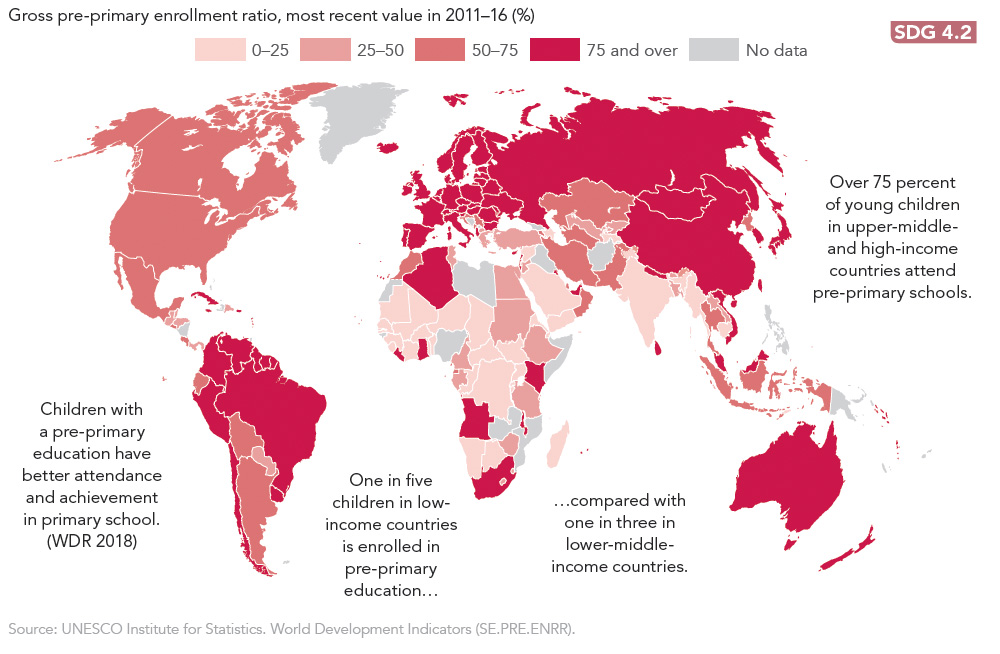
The World Bank recently published the 2018 Atlas of Sustainable Development Goals. One of the United Nations’ Sustainable Development Goals is to “ensure inclusive and equitable education and promote lifelong learning opportunities for all.” A key concrete measure being tracked for the project is “total enrollment in pre-primary education, regardless of age, expressed as a percentage of the total population of official pre-primary education age.” The map above displays the rate of pre-primary enrollment by country based on the most recent data reported between the years 2011-2016.
The highest percentages of enrollment in pre-primary education do not necessarily correspond to the highest income countries. The United States is considered a high income country by the World Bank. In the US, about 70% of preschool age children are enrolled in pre-primary education. Other high income countries with 50-75% of children enrolled in pre-primary education are Canada and Oman.
Many high income countries have a pre-primary enrollment of 75% or higher, including most of western Europe, Scandinavia, Australia, New Zealand, Chile, Uruguay, Japan, and South Korea. Some low and lower middle income countries (< $3,955 GNI per capita) where more than 75% of children are in pre-primary education are Mongolia, Ghana, Liberia, Sri Lanka, Ukraine, Kenya, and Vietnam.
The report notes that “Children with a pre-primary education have better attendance and achievement in primary school.” With about 30% of preschool age children not enrolled in preschool in the United States, libraries can help to fill this gap by providing informal early learning opportunities to young children and their families.
The full report can be found here.
Note: This post is part of our series, “The LRS Number.” In this series, we highlight statistics that help tell the story of the 21st-century library.